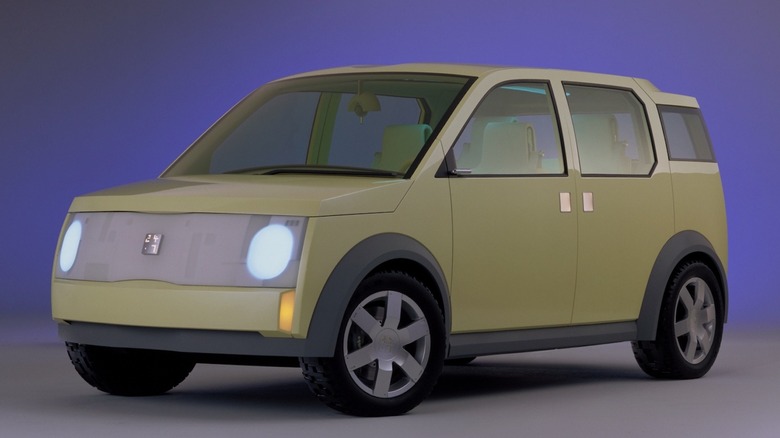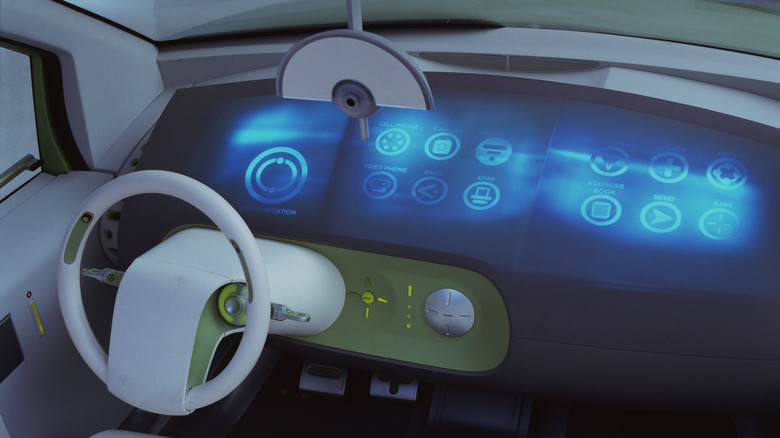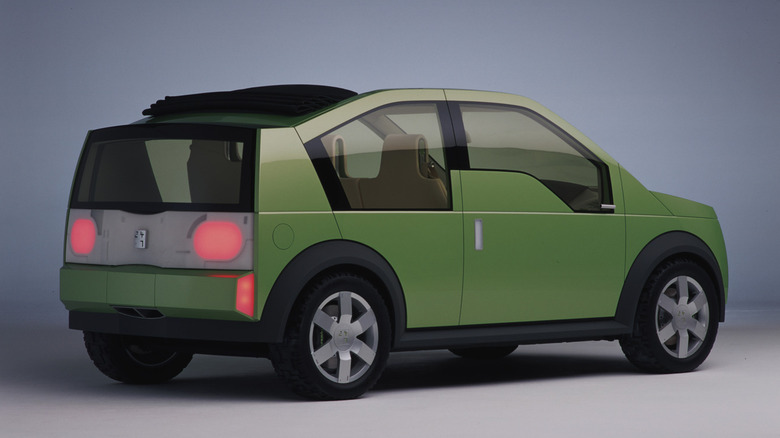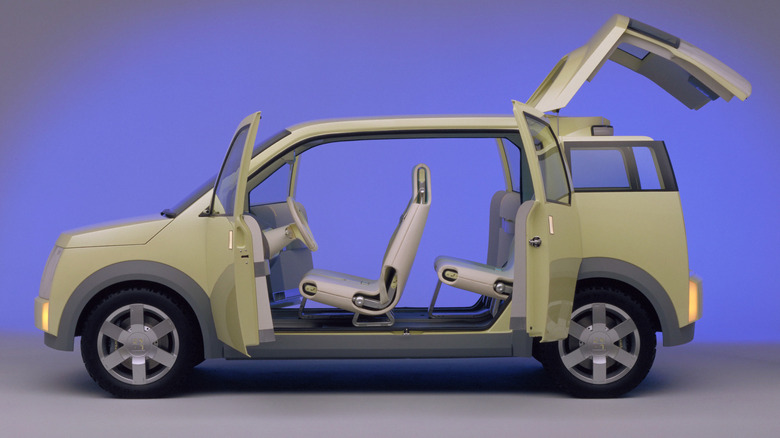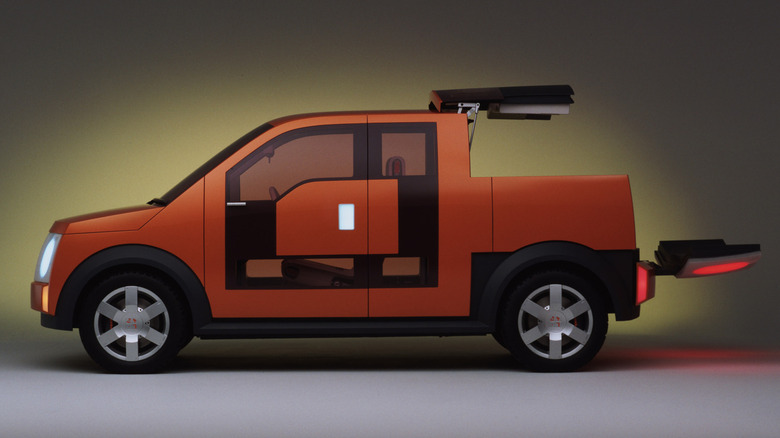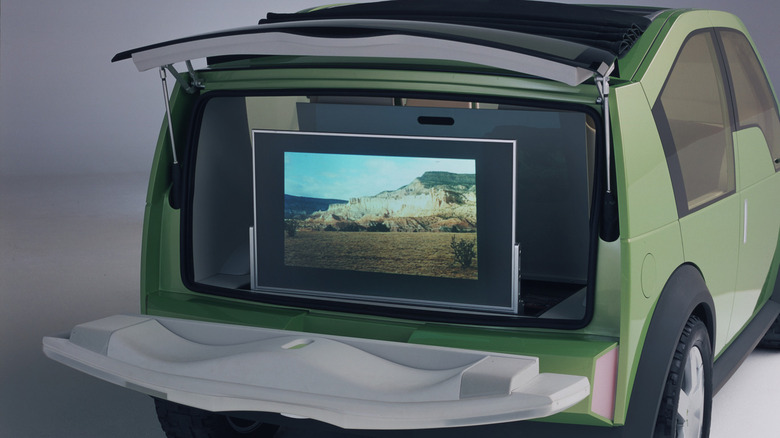Why Ford's 24.7 Concepts Were So Ahead Of Their Time (For Better Or Worse)
Cars with connectivity features like Apple CarPlay, Android Auto, or OEM infotainment systems have been the norm for the past decade or so, and you'd have a tough time trying to find any car for sale that doesn't have a huge screen somewhere on the dashboard. Although it may seem like ancient history now, there was a time when a car wasn't as connected to the outside world as it is now.
Ford, however had ideas for a connected commuting experience as far back as the year 2000, with its 24.7 line of concept cars. The 24.7 concepts consisted of a coupe, wagon, and truck and were billed as "ideal transportation for people who are constantly moving, whether they are rushing to the next job site or looking for the second or third party of the night" per a Ford press release from 2000. It was supposed to be the car for everyone.
A familiar Ford underneath
Before one can discuss the futuristic styling of either one of the three 24.7 models, there are a few key components to the concept that are immediately recognizable to any Ford fan. The first is its engine. Unlike every concept from today, the Ford 24.7 models were not electric vehicles, they were, in fact, powered by a very average drivetrain, the 2-liter "Zetec" four-cylinder found in the Ford Focus from the time. The entire concept is built on the Focus platform. Ford did not note how much horsepower the 24.7 line would generate, but in a 2000 model year Focus, the 2-liter put out an adequate 110 horsepower.
In classic early-2000s style, it featured matte-colored wheels and custom Goodyear tires. Ford's press release also goes out of its way in announcing that the concepts feature LED headlights and taillights that "last the lifetime of the vehicle."
24.7 Coupe
One of the main ideas behind the 24.7 line was the customizable dashboard. In 2000, technology like LED or OLED screens weren't commonplace as they are today, even more so in cars. The 24.7's dashboard utilized what appears to be a projected image. Ford said that this allowed the user to completely configure the dashboard to whatever they want. Additionally, a projector hidden in the floor could display content on the back window glass.
According to a press release, this projection "gives each driver the ability to customize the instrument panel by changing the layout of the gauges and engaging additional functions such as e-mail, GPS and video phone." In a way, all of those features are present on any car with Android Auto or Apple CarPlay. But this was seemingly envisioned before the concept of distracted driving was labeled. Taking a video call or answering an email while you're on your commute is not exactly the safest way to spend your time driving.
The coupe specifically looks like it rolled off an anime assembly line, with its huge, cheery headlights and overall happy demeanor. It could easily pass for an EV proof of concept today.
24.7 Wagon
The 24.7 Wagon looks like a cross between a Honda Element and the shuttlecraft from Star Trek, and not in a bad way. Perhaps not on wide and fast American roads, the Wagon could be a very capable daily commuter. That is, of course, if you don't decide to answer all of your emails or participate in a company-wide conference call while you're screaming down the highway.
The rear-hinged passenger doors and lack of a b-pillar might have safety regulators worried in the event of a rollover, but it's incredibly valuable from a convenience standpoint. Ford did not release exact interior dimensions, but just judging by the pictures and near stadium-style seating, you could likely fit four adults inside the Wagon with room to spare. The interior is sanitary and futuristic, but it doesn't looks like a particularly hateful place to be. Add in a giant screen in the rear compartment and it might be a capable party Wagon.
On the outside, it has the huge taillights and headlights indicative of the entire line. It's not a bad looking concept by any stretch, it just doesn't look anything like a Ford, at least any Ford from this millennium.
24.7 Truck
While the 24.7 Wagon and Coupe could be genuinely useful (aside from the connected features) in a number of different places, the same can't really be said about the 24.7 Truck. In the year 2000, the market was not hurting for compact trucks as models like the Ford Ranger, Nissan Frontier, Mazda B-Series, and Toyota Tacoma were all mainstream successes. If it came to fruition, the 24.7 Truck likely wouldn't have captured the public's attention, at least the section of people who actually use a truck for truck stuff.
It wasn't because the engine was too weak either –110 hp is plenty for light duty. It probably wouldn't have taken off simply because the bed is too short to carry anything very large. Most SUVs, crossovers, or station wagons would be capable carrying what the 24.7 could fit in its bed, negating the need for a truck in the first place. Still, the design has aged fairly well 24 years later. It might not have been a useful truck, but at least it looked interesting, and that's worth something.
Ford's future
All told, the 24.7 concepts might not have been sales stars if the lineup ever saw full scale production. However, the lineup did, perhaps accidentally, predict huge screens and internet connectivity in cars long before the technology was commercially available and the internet became an inexorable part of everyone's lives.
Aside from the 24.7 Truck which could be seen as a proto-Ford Maverick in that it's compact car-based pickup, no other model from the 24.7 lineup has even the most tenuous connection to the Ford of 2024. Not only has Ford stopped selling sedans and compact cars entirely, its lineup has really only gotten bigger in size.
Ford's lineup plans aside, it's hard to feel a little sad that Ford never went the compact city car route, and instead opted for an entirely crossover and SUV future. Answering your email and taking a video call while you're driving might not be the safest use of 2000s-era futuristic technology, but at least it looked good.
